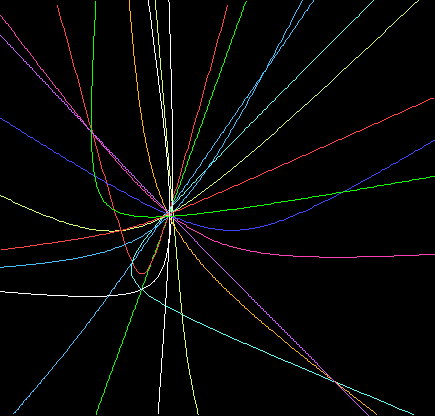How to Read Capacitor Values
I need to reconstruct a high-pass filter I scavenged for parts when we were working off-site (you know you are in trouble when you are cutting resistors out of your circuit) and it started to really bug me that I don’t know why the capacitor I’m using, which I know perfectly well must be 0.1 uF, says “.1k”, which seems to imply 0.1 * 1000 pF, except that that can’t possibly be right.
As my friend David would say, “if only there were a vast world-wide repository of information we could search through”. Google did a pretty good job, but in the interest helping PageRank, here are the best resources I found for deciphering capacitor values:
- How to read Capacitor Codes from Transtronic’s web site. Best discussion of the multiple-digit codes.
- How to read a capacitor, from a lab at Caltech. Provides some good guidance about what kind of capacitance to expect from different kinds of capacitors. Quite helpful at developing intuition.
- A Note on Reading Capacitor Values from a lab course at the University of Pennsylvania - School of Engineering and Applied Sciences. Unfortunately it’s a scanned-from-paper PDF file, but the attitude (“Cap markings have been designed by an international committee to be nearly unintelligible”) is the best!
The essential point of the U. Penn document is this: there are only uF and pF. If the number is an integer greater than 1 (including any of the complicated codes referenced above) it’s in pF. If the number is less than one, it’s in uF, unless it’s bigger than 1 uF, in which case the cap is likey to be so monstrously huge that there is plenty of room to write “10 F - 2500 V — STAND BACK 100 FEET” on the side of it.
Hence my 0.1k 250V polyester capacitor is indeed a 0.1 uF capacitor. What’s with the “k”? To quote from the U. Penn note:
The challenge is to resist the plausible assumption that “k” means “kilo”. It does not; it is not a unit marking, but a tolerance notation (it means +/- 10%). Wasn’t that nasty of the labelers to chose “k”? Guess what’s another favorite letter for tolerance. That’s right: M. Pretty mean!
I really liked the observation of one of the links above that the capacitor tolerance letters (D, E, F, G, H, J, K, M, etc) appear to come from a random walk down the QWERTY keyboard, but it’s not (quite) that pathological. Instead the letters start at B and go up to P, with possibly ambiguous letters “I”, “L” and “O” left out of the sequence. Then there are some other letters beyond P that mean other things.
[/work]
Graphical solutions to numerical problems
I can’t write about a lot of the things I do for ShotSpotter but these pictures are kind of pretty and quite distant from any practical application so I thought I’d post them.
So a hyperbola is the set of points that are of constant differential distance from two fixed points, which are called the foci. These are graphs made by drawing the hyperbolas defined by the n choose 2 pairs of sensor gunshot arrival times; the intersection of the hyperbolas is where the shot was fired. (This isn’t actually how we compute shot locations, but it uses the same concepts.)
But I just think these are pretty.

This is the same graph, in extreeeeme close-up.

[/work]
